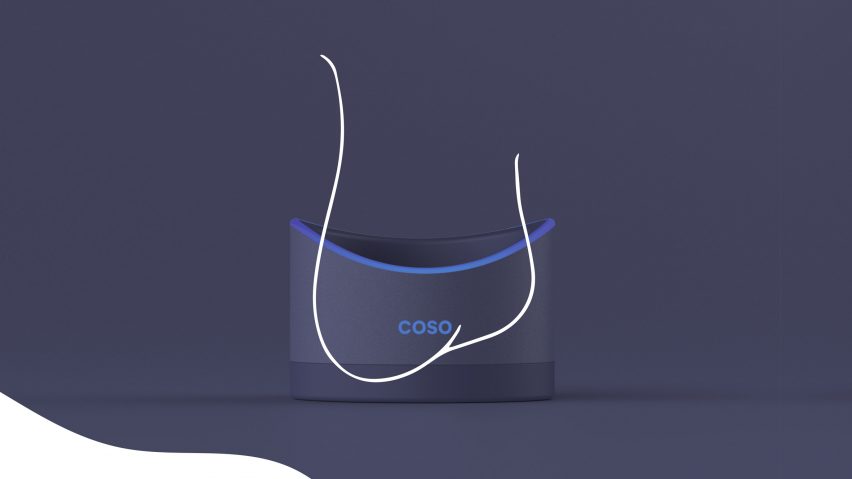Last week Dezeen reported on the invention of Wondaleaf, an adhesive prophylactic which its creator claims is the world's first unisex condom. Here, we round up eight other contraceptive designs with the potential to challenge ideas about sexual health.
Grass fibre condom by the University of Queensland
Researchers at the University of Queensland discovered a way of extracting nano-fibres from the Australian native spinifex grass to use for condoms that are thinner and stronger than standard latex.
They were assisted by the indigenous Queensland community of Indjalandji-Dhidhanu, which has long used spinifex as an adhesive for spearheads.
Find out more about the grass fibre condom ›
Described as a fitness tracker for the penis, the i.Con is a smart condom ring manufactured by British Condoms.
The wearable tech device measures penis girth, thrust counts and duration of intercourse as well as detecting signs of sexually transmitted infections – and users are even able to share their data publicly online, if they wish.
After she was diagnosed with a cervical cancer precursor that meant she is unable to take the female birth control pill, German design graduate Rebecca Weiss developed Coso – a male contraceptive device that uses ultrasound waves to halt sperm regeneration temporarily.
Users of the James Dyson Award-winning gadget fill it up with water, turn it on and dip in their testicles. Contraceptive effectiveness starts two weeks after the first application and the effect is reversible, with fertility expected to return no later than six months after the last application.
Swedish sex toy company Lelo developed a condom with hexagon-shaped cells intended to have better structural integrity and extra grip compared to a regular condom, despite still being made from latex.
"There's a reason why honeycombs are the shaped they are, and why snake scales move the way they do," said Filip Sedic, founder of Lelo. "They're nature's go-to shape for anything needing to be at once lightweight, and incredibly strong."
Created by Taiwanese designer Guan-Hao Pan, these condom packages are modelled on phallic fruit and veg denoting their girth.
The idea is that users can hold the cylindrical tubes and determine the correct size for them – whether that be courgette, turnip, banana, carrot or cucumber.
Find out more about Love Guide ›
S.T.Eye by Daanyaal Ali, Muaz Nawaz and Chirag Shah
UK schoolchildren Daanyaal Ali, Muaz Nawaz and Chirag Shah won a prize at the 2015 TeenTech Awards for their S.T.EYE concept, which saw them design condoms that change colour when a sexually transmitted disease is detected.
The proposed condom design would be embedded with chemical indicators that would react to the bacteria that cause infections such as chlamydia and syphilis, changing colour to warn of the risk.
Bearina is a concept for a contraceptive intrauterine contraceptive device (IUD) that works using a one-cent coin.
In normal copper IUDs like the coil, metal ions dissolving from the device act as spermicide, so the Bearina provides a holder for a coin with a nylon thread.
It's the brainchild of Ronen Kadushin, who open-sourced the design so anyone can download the production files and theoretically manufacture an IUD at the fraction of the price of a conventional model.
One-Handed Condom Wrapper by Ben Pawle
British designer Ben Pawle created a condom wrapper for people with disabilities that can be opened with a simple finger-clicking action to break both the outer layer of foil and the thin plastic lining inside.
"I guess it's just common sense – why is a condom an obstacle and hinderance instead of enhancing a moment?" Pawle said.
Find out more about the One Handed Condom Wrapper ›

